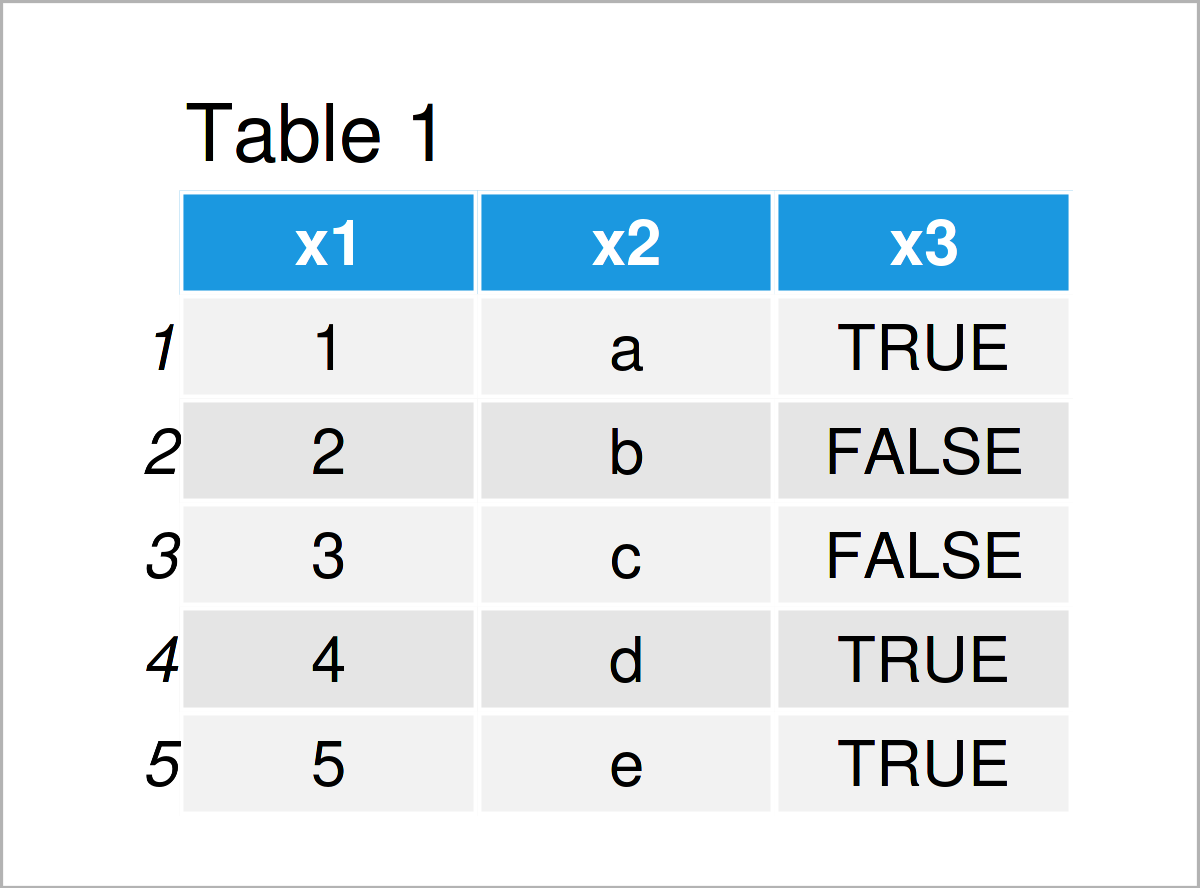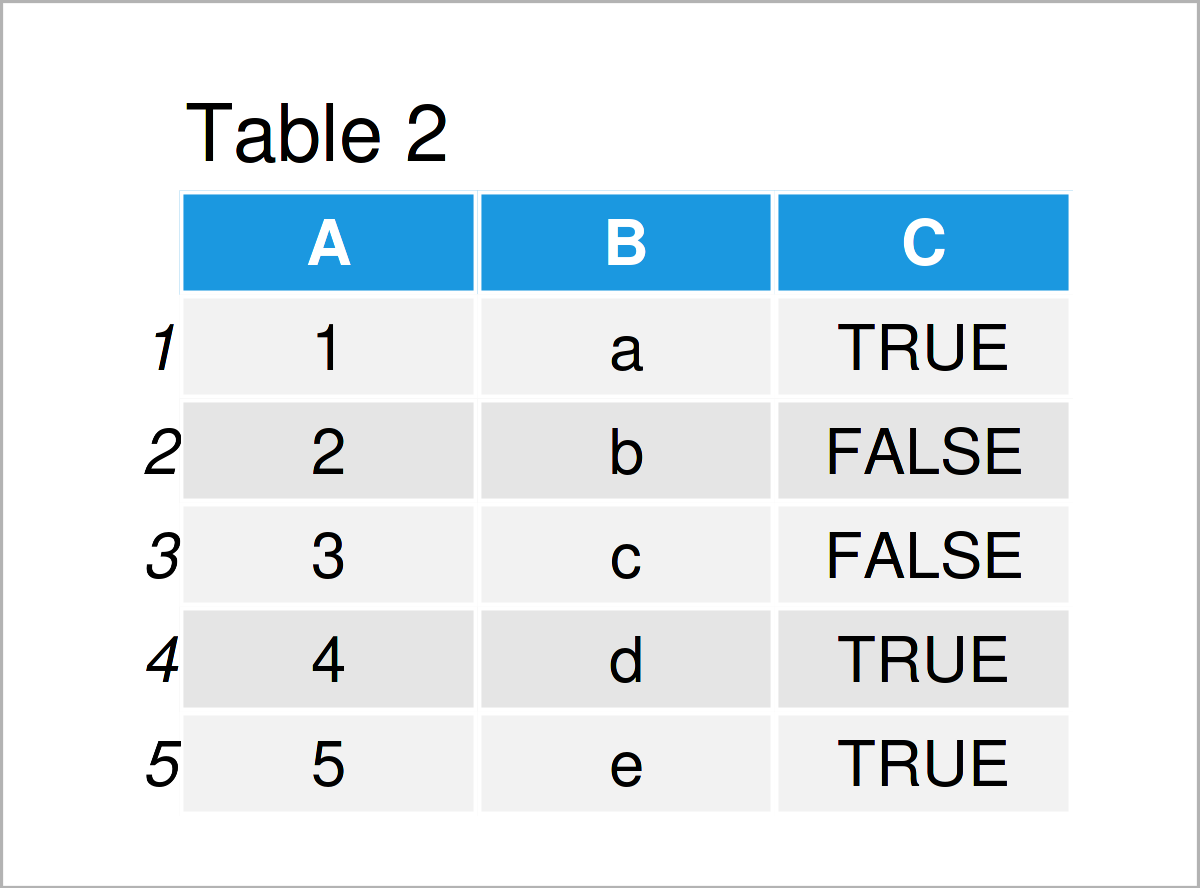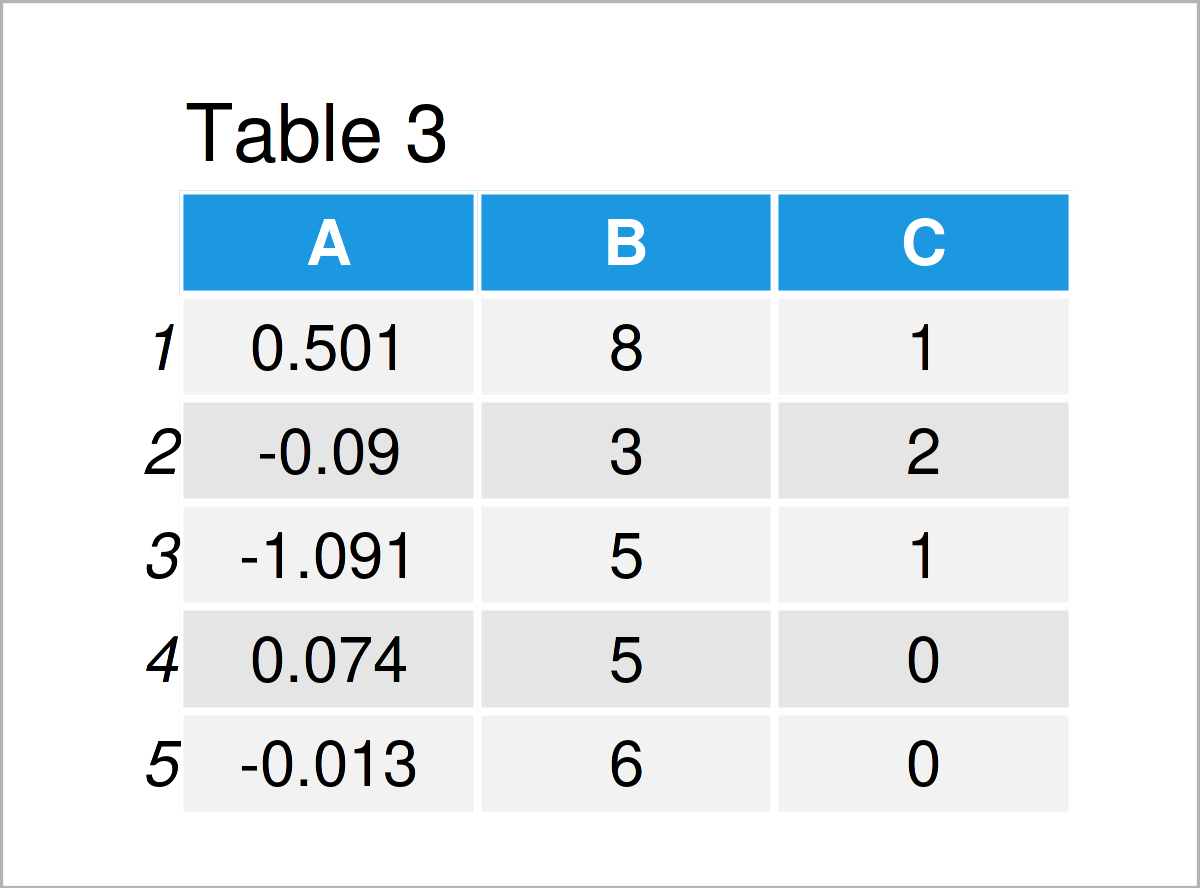
In this R tutorial you’ll learn how to build a data.table object. We also show you how to create a data.table with column names.
The content of the tutorial looks as follows:
In order to use the functions of the data.table package, we first need to install and load data.table to RStudio:
install.packages("data.table") # Install data.table package library("data.table") # Load data.table package
We also create some example vectors which we later combine to a data.table:
x1 1:5 # Vector 1 x2 letters[1:5] # Vector 2 x3 c(TRUE, FALSE, FALSE, TRUE, TRUE) # Vector 3
The following R code shows how to combine the previously defined vectors into a data.table.
dt_1 data.table(x1, x2, x3) # Create data.table dt_1

Have a look at the previous Table 1. The data we created has five rows and three variables, which correspond to our input vectors. The column names correspond to our vector names.
In Example 1, we created a data.table where the column names were automatically set to the input vector names. In Example 2, we generate the same data.table, but explicitly determine the names of the columns.
dt_2 data.table("A" = x1, "B" = x2, "C" = x3) # Create data.table dt_2

The output of the previous R code is shown in Table 2: Now the columns are called A, B, and C.
Instead of creating a data.table from already existing vectors, we can also make it from scratch. Example 3 explains how to, using randomly generated values from the normal, the poisson, and the binomial distribution.
dt_3 data.table("A" = rnorm(5), "B" = rpois(5, 5), "C" = rbinom(5, 2, .6)) # Create data.table dt_3

As shown in Table 3, we have created a data.table with random values.
Do you want to learn more about the generation of a data.table? Then you may have a look at the following video on my YouTube channel. In the video, I’m explaining the R syntax of this post.
The YouTube video will be added soon.
Furthermore, you might want to have a look at some other RStudio tutorials on this website. A selection of tutorials that are related to the generation of a data.table is listed below.
In this tutorial you have learned how to you can initialize and construct a data.table object in the R programming language. Please let me know in the comments section below, in case you have additional comments and/or questions.

This page was created in collaboration with Anna-Lena Wölwer. Have a look at Anna-Lena’s author page to get further details about her academic background and the other articles she has written for Statistics Globe.